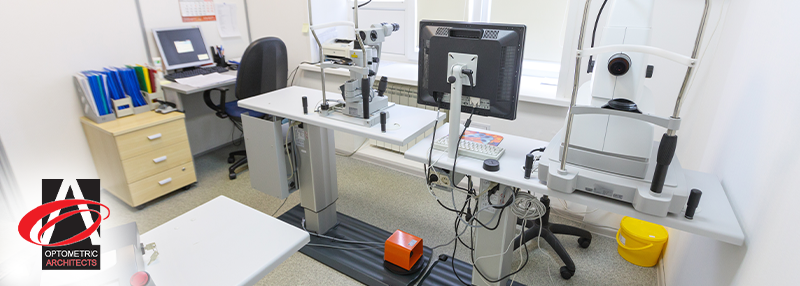Posted On: February 12, 2025 by Optometric Architects in: Best Practices

As an optometrist, you understand the importance of creating a welcoming and functional office space that meets the needs of your patients and staff. However, even with the best intentions, mistakes can be made that can negatively impact the patient experience, staff productivity, and ultimately, your practice's success. Today, let’s explore five common mistakes ODs make in their offices and provide expert advice on how to avoid them.
Mistake #1: Inadequate Lighting
Inadequate lighting can lead to eye strain, headaches, and decreased productivity. Common mistakes include:
- Insufficient lighting in exam rooms
- Harsh overhead lighting that causes glare
- Inadequate task lighting for staff
Solution: Opt for layered lighting that includes a combination of overhead lighting, task lighting, and ambient lighting. Consider using LED lighting, which is energy-efficient and provides high-quality light.
Mistake #2: Poor Layout and Workflow
A poorly designed layout can lead to inefficiencies, bottlenecks, and decreased patient satisfaction. Common mistakes include:
- Inefficient use of space
- Poorly placed equipment and supplies
- Inadequate patient flow
Solution: Work with an optometric architect to design a layout that optimizes workflow, reduces congestion, and improves patient flow. Consider a "workhorse" layout that centralizes equipment and supplies, and designates specific areas for patient intake, exam rooms, and dispensary. Also, always be sure to align with the Americans with Disabilities Act (ADA) guidelines for space requirements. Working with a professional optometric architect will ensure your design meets all these requirements.
Mistake #3: Inadequate Technology Integration
Failing to integrate technology can lead to inefficiencies, errors, and decreased patient satisfaction. Common mistakes include:
- Outdated technology
- Inadequate EHR system integration
- Insufficient digital signage
Solution: Invest in modern technology that integrates seamlessly with your EHR system, including digital signage, online scheduling, and patient engagement platforms. Consider working with a technology consultant to ensure a smooth transition.
Mistake #4: Ignoring Acoustics and Sound Quality
Poor acoustics can lead to distractions, decreased patient satisfaction, and even HIPAA violations. Common mistakes include:
- Insufficient soundproofing
- Inadequate white noise systems
- Poorly placed waiting areas
Solution: Incorporate sound-absorbing materials, such as acoustic panels, and a patient privacy sound masking system to minimize distractions. Consider designing waiting areas with comfortable seating and minimal noise pollution.
Mistake #5: Neglecting Patient Experience
Failing to prioritize patient experience can lead to decreased satisfaction, loyalty, and online reviews. Common mistakes include:
- Inadequate amenities
- Uncomfortable waiting areas
- Poor communication
Solution: Design your office with the patient in mind, incorporating amenities such as free Wi-Fi, comfortable seating, and refreshments. Implement a patient engagement platform to improve communication and encourage online reviews.
Get Expert Guidance from Optometric Architects
By avoiding these common mistakes, you can create an optometry office space that is functional, efficient, and patient-centered. Remember to prioritize design, technology, and patient experience to create an optometry practice that thrives!
At Optometric Architects, we understand the unique needs of optometric practices. Our team of experts can help you design an office space that meets your needs and exceeds your patients' expectations. Contact us today to schedule a consultation and take the first step towards creating a thriving practice. Explore our portfolio to see the projects we've completed and imagine the possibilities for your own space.


0 comments